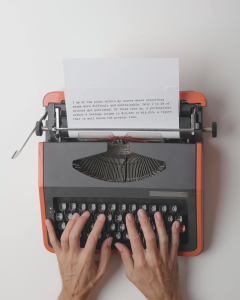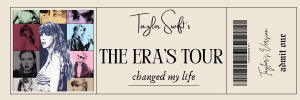Innovations in the fintech industry, shifts in consumer behaviours, and the rising cost of living are changing the financial landscape as we know it. New financial products are being created every day, and the future of the credit industry is unknown. Arguably one of the most impactful innovations in recent years is the rapidly rising popularity of Buy Now, Pay Later (BNPL) platforms. Afterpay alone has over 13 million users worldwide — who would have thought just a few years ago consumers would be relying so heavily on these services?
BNPL platforms use clever advertising to connect with their targeted demographic of 18-to-34-year-olds, which is coincidentally the most desirable demographic to advertisers more generally. Young people are hot property and everyone wants their attention. While the concept seems simple, BNPL platforms are more complex they appear at first glance. Through targeted advertising and manipulative techniques, these services target vulnerable consumers who are more likely to overspend through mass infiltration and by making the user process incredibly simple.
What is Buy Now, Pay Later?
Platforms like Afterpay or Zip partner with retailers to offer consumers an easily accessible line of credit in real time. These schemes are the modern lay-by service, but you get to take the stuff home before you pay for it. There are essentially no fees for consumers (unless you miss a payment) because the platforms primarily make their money from the transaction fees they charge retailers. These fees depend on the platform and the number of transactions performed through the site, but is typically between 4 to 6 per cent of each transaction plus a fixed commission.
While BNPL schemes essentially act like credit cards, due to legal loopholes, they do not fall under the definition of ‘credit providers’ and therefore are not regulated in the same way as other financial services. This means they are not obligated to perform credit checks to accurately assess a consumer’s ability to repay their loan. Unlike traditional lenders (like banks), BNPL schemes put more responsibility on users to ensure they have the ability to repay what they are borrowing. This legal grey area has created confusion for consumers, as many people don’t realise they have actually taken out a line of credit until they attempt to access a traditional credit service, like opening a credit card. When applying for a loan, credit assessors not only look at what percentage of your weekly income BNPL debts account for, but also whether you have any payment reversals or chargebacks on your accounts.
Signing up for a BNPL service is easy and there is no requirement for you to divulge your financial history or current financial position. This means you could access a line of credit through Afterpay even if you are working casually with no reliable income and owe debts to other providers. This could cause serious harm to consumers, and can result in overspending, inability to repay loans, and potentially negatively affect a consumer’s financial position in the long term.
How are young Australians affected by BNPL?
A recent report by Monash University revealed around half of the young Australians surveyed thought BNPL had a negative effect on their financial behaviour. Platforms like Klarna specifically target a young demographic, who are less likely to be financially literate, and more likely to have an unstable income. This also means this demographic are more likely to be irrational consumers who are easily influenced by outside factors. In scientific terms, your pre-frontal cortex (the part of your brain that plans and executes for the future) doesn’t fully develop until around 25, which means young people are at more risk of falling for clever marketing tricks.
“Like any financial product, it can be used wisely or abused. It’s been a godsend for me, but obviously some people struggle with it and it becomes a financial burden for them”, said QUT student Annabelle Whitehead-Broad.
A 2021 study by the NSW Council of Social Service found that around 20% of BNPL users reported they did not know the full amount of money they owed. Since the majority of people who use BNPL platforms use more than one, this makes sense. Unless you are actively checking each platform on a regular basis, it can be really difficult to keep on top of all your transactions. Not to mention keeping on top of your regular spending and your bank balance.
Liam*, a QUT alum who works in the credit industry, said he routinely works with customers who have taken on debt with Afterpay, Zip Pay, PayPal Pay in 4, Klarna, Bundll, Zip Money, and Step Pay, among others.
“In my experience, people are very negligent about their BNPL debt and how it affects their eligibility for borrowing … It’s actually uncommon for customers to use only one BNPL service.”
Buy Now, Pay Later schemes can be particularly problematic for people who struggle with compulsive shopping. Not only is the check-out and sign-up process super easy, but you are also encouraged to spend more with each transaction. If you have ever used a BNPL service, you know the thrill that comes from seeing your shopping cart total being divided into four smaller amounts. This tricks your brain into thinking you aren’t spending the full amount, and can result in you actually spending much more because you’re not looking at the total. Next thing you know, you’ve added another $100 to your cart. But hey, what’s another $25 a fortnight?
“The hesitance that accompanies full retail pricing is suspended if you can pay in instalments,” said Liam*.
“Of course, in reality one is actually paying more than the retail price (given the service fee of the BNPL provider), but by subduing the immediate costs of outright purchase, it so often follows that our customers buy several products through BNPL within a short time span.
“They effectively snowball debt, with the illusion that they’re managing their purchases.”
As BNPL platforms become more ubiquitous and ingrained in the online shopping experience, the negative behaviours encouraged by these platforms will increase and become more embedded in our shopping culture. These types of behaviours affect much more than just our finances—it could result in a generation of consumers who consistently seek immediate gratification, and overspend without much thought, as well as contributing to the growing issue of overconsumption.
What does the future of the industry look like?
Currently, the only regulations which guide Buy Now, Pay Later companies are the Australian Financial Industry Association Code of Conduct. However, industry bodies say a code of conduct is not a replacement for effective regulation, that the Code is too broad, and does not put specific measures in place which would treat these businesses as credit lenders. The Australian government is currently seeking feedback on a regulatory framework for BNPL companies, which means they will fall under the National Consumer Credit Protection Act 2009. Potentially, this means these businesses might be forced to follow the same strict assessment processes as other credit providers.
“There needs to be more regulation of these lenders but with that, financial institutions should treat someone exactly the same who uses [Afterpay] and repays on time, compared to someone who uses a credit card to buy things,” said mature-aged QUT student Stephen Martin.
“A bank will see you as responsible if you use a credit card and pay back the limit at the end of each month responsibly. However, if you use Afterpay responsibly (and pay back and don’t extend yourself), the bank will see you as a credit risk…”
While stricter regulation will protect consumers, it could be devastating for the industry. The success of these platforms is primarily due to the lack of regulation, which means they can lend to pretty much any person who applies regardless of their financial position. One of the key challenges in the fintech industry is balancing regulation, consumer protection and privacy while allowing innovation to continue and encouraging growth in the credit market. One potential solution would be for BNPL platforms to collaborate with banks and other financial service providers. Through partnerships, providers could ensure they are complying with regulations, and traditional financial institutions can take advantage of innovative digital products.
***
Buy Now, Pay Later services create an illusion of affordability by effectively obscuring the user’s financial reality, and manipulating them into thinking they’re playing the system. But really, it’s the consumer who is being played. These services are typically used when purchasing non-essential items, like clothing and electronics, and regular use of these platforms can lead to increased financial stress.
“When I was budgeting terribly, Zip Pay was the only reason I bought groceries the week before payday. But life has been much less stressful since I cleared my debt with them,” said QUT student Brandon Moroney.
The truth is just as complex as the problem itself—while BNPL services are problematic in many ways, they also provide a lifeline to low-income earners by allowing people to make larger purchases and afford essential yet high-priced goods.
“…without them a bunch of people, myself included, would not be able to access the medications we need that aren’t covered by the PBS, such as compounded medications,” said QUT student and former Guild Disability Officer, Anne Kelley.
The research shows most people who use BNPL are rational and savvy consumers, and are able to manage their repayments without falling behind. But without regulation and government intervention, these companies will continue to provide consumers more and more spending power without doing basic credit checks. And the people who will be disproportionately affected by this are the ones who are already behind and struggling.
*Name changed








